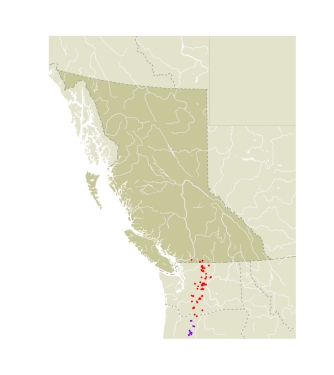AdultHoffman's Checkerspot is difficult to distinguish from the Northern Checkerspot. On the dorsal hindwing, the median row of light spots is almost white. In Northern Checkerspots this light area is cream to reddish.
Immature StagesNewcomer (1967a) described the immatures in detail. The egg is light green and 0.6 mm wide. The mature larvae are black with white spots on the uppersides and top. The line above the spiracles is cream, and below that the body is brown. Above the spiracular line the tubercles with numerous branches are black ringed with white at the base. Below the spiracular line, the tubercles are brown. The ground colour of the pupa is pearly white, with an intricate pattern of brown/black markings.
SubspeciesThe BC subspecies is the Manchada Checkerspot, C.h. manchada (Bauer, 1960) (TL: Tumwater Cyn., WA). It ranges south from Manning Provincial Park through the Washington Cascades to, but not across, the Columbia River.
